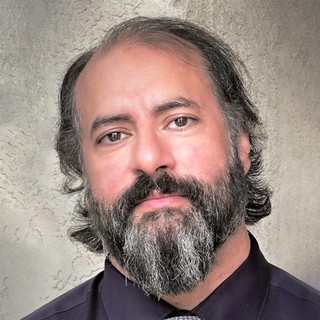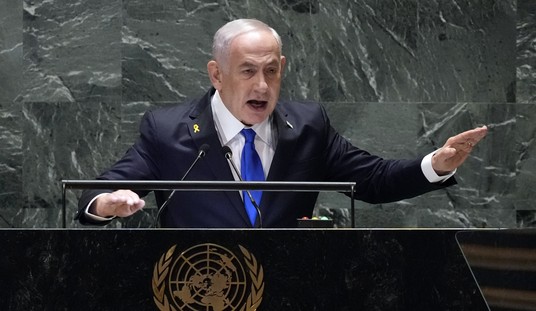Yet another piece of evidence tying misled members of the United States government to the Islamic State’s roots has come to light. Sheikh Yusuf al-Qaradawi, one of the most authoritative clerics in the Muslim community – he has his own program on Al Jazeera and is chairman of the International Union of Muslim Scholars — asserts in a new interview that Abu Bakr al-Baghdadi, the leader of the head-chopping, infidel-crucifying Islamic State, was once a member of the Muslim Brotherhood.
The U.S. government, especially the Obama administration, has been allied with the Muslim Brotherhood. Examples of a U.S./Brotherhood alliance are too many to list in their entirety here; they have been on open display from people like Hillary Clinton, former U.S. ambassador to Egypt Anne Patterson, and Sen. John McCain. (McCain not only may have been photographed with known Islamic terrorists, but with al-Baghdadi himself).
According to Sheikh Qaradawi:
[T]his youth [al-Baghdadi] was from the start among the top ranks of the Brotherhood, but he was inclined to [positions of] leadership and so forth. … Then, after he spent years in prison [for Brotherhood activities] he came out and joined with them [nascent Islamic State].
The Egyptian minister of religious endowments, Dr. Muhammad Mukhtar Gom‘a, stated:
Qaradawi’s confession [concerning al-Baghdadi] confirms that the Brotherhood is the spiritual father to every extremist group.
Qaradawi’s revelation was not meant to cast aspersions on the Brotherhood, especially since he is one of its spiritual fathers. More likely, Qaradawi was invoking the idea that imprisoning and suppressing “moderate Islamists” — namely the Muslim Brotherhood, as occurred most recently in Egypt’s revolution — will only lead to their “radicalization.” This is a widely accepted theory, especially in the West. Al-Qaeda’s Ayman Zawahiri is another former Brotherhood member who is regularly portrayed as becoming “radicalized” and turning to jihad after being imprisoned in Egypt in 1981. However, any evaluation of the facts of his life demonstrates that he was a “radical” well before he was incarcerated — he was imprisoned precisely because he was radical.
The idea that the West should cooperate and ally with the “moderate” and “nonviolent” Muslim Brotherhood lest its members turn to “extremism, radicalism, and terrorism” has been swallowed whole by many Western academics and politicians. To understand this phenomenon, one need only examine the “good cop, bad cop” routine to see how it captures U.S. behavior towards “moderate/nonviolent Islamists” (“good cops”) and “radical/violent Islamists” (“bad cops”). According to the CIA Human Resource Exploitation Training Manual (as cited in the book Social Protest in Contemporary China, 2003-2010),
Good cop/bad cop, also called joint questioning and friend and foe, is a psychological tactic used for interrogation. “Good cop/bad cop” tactics involves a team of two interrogators who take apparently opposing approaches to the subject. The interrogators may interview the subject alternately or may confront the subject at the same time. The “bad cop” takes an aggressive, negative stance toward the subject, making blatant accusations, derogatory comments, threats, and in general creating antipathy between the subject and himself. This sets the stage for the “good cop” to act sympathetically, appearing supportive, understanding, in general showing sympathy for the subject. The good cop will also defend the subject from the bad cop. The subject may feel he can cooperate with the good cop out of trust or fear of the bad cop. He may then seek protection by and trust the good cop and provide the information the interrogators are seeking.
Consider how this definition applies to the U.S. government’s approach to the supposed Islamist dichotomy of “violence” and “nonviolence.” The violent jihadis are the feared enemies who cannot be reasoned with, setting the stage for the purportedly nonviolent Islamists, namely the Muslim Brotherhood.
Mideast academics and talking heads have long promoted the tactic of cooperating with the “nonviolent” Islamists, and its apparently necessary assumption that delineating the two is simple. For instance, CDR Youssef Aboul-Enein, an Obama advisor, argues the following in his book Militant Islamist Ideology: Understanding the Global Threat:
It is the Militant Islamists who are our adversary. They represent an immediate threat to the national security of the United States. They must not be confused with Islamists.
Aboul-Enein, like many others, argues that U.S. leadership should work with the nonviolent Islamists in order to weaken the appeal of the militants. And yet, just as “good cop/bad cop” is a false dichotomy in that both cops are working together and towards the same goal, so too is the “nonviolent Islamist/violent Islamist” construction a false dichotomy.
Both groups of Islamists overlap and work towards the same goal: the resurrection of a Sharia-enforcing caliphate, which Abu Bakr al-Baghdadi, a former “nonviolent Islamist,” recently accomplished.










Join the conversation as a VIP Member